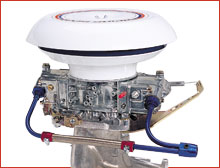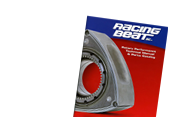Carburetor Tuning

This Racing Beat-modified Holley carburetor has been extensively tuned for a Bridge-Port 13B engine.
Carburetor "tuning" is a very complex subject. The most common elements to change in a given carburetor are the venturis, the emulsion tubes, the air jets, and the fuel jets. The relationships between these parts are complex.
Generally, larger venturis admit more air to the engine, but weaken the "signal suction" to the fuel in the emulsion well. Moreover, larger air jets weaken the signal, but pre-mix more air with the fuel for better atomization; and finally, larger fuel jets richen the mixture.
The action of the emulsion tubes is very complex subject and typically requires a great deal of experimentation. Of the carburetors we suggest, only the Weber has easily replaceable venturis, although they don't offer all sizes. The stock carburetor venturis are pressed in place (except the 13B secondaries, which are fixed), and can be removed and machined. Bigger venturis generally improve peak power, but narrow the power band. They also require bigger fuel jets and smaller air jets.
Air jets operate opposite the fuel jets in effect. Also, they tend to have more effect at high RPM. As a result, by balancing the air and fuel jet sizes, the shape of the fuel flow curve can be changed. This concept is the heart of carburetor tuning.
Four-Barrel Carburetor Tuning
In our experience, when tuning a four-barrel carburetor (stock or Holley), first, adjust the primary jets for smooth operation, good throttle response, and mileage, then adjust the full throttle mixture (all four barrels open) with the secondary jets. It may then be necessary to richen the primary fuel jets and slightly lean the secondary fuel jets to improve the primary-to-secondary transition.
Copyright 2007-2024 Racing Beat, Inc ©





